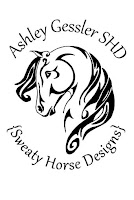This is what my photography used to look like before I learned to get down on my subject's level (Read Improving Your Pictures With This One Tiny Adjustment), image balance, yada, yada, yada.
My old photography skills. Why did they always feel "empty?"
I knew there had to be something I was missing. I knew deep down that I could turn out better work than this and I was determined to figure out why. I began going through my collection of candid shots. They were rough around the edges (some of them even made me cringe) and I started paying close attention to my favorite images and why they seemed so different to me. This activity is very similar to an exercise I later did during one of the photography workshops I attended many years later. Read about it in What's Your Style? And, How To Find It.
What I started noticing was a high percentage of my so-called blah images had great deal of "blank" space. For instance, in the image of my daughter she looks rather small in the photo. The background plays a much larger role and it is not until later that you notice her puffing out her chest. The same is true for the photo of the horse jumping. I did my best to edit out the distracting objects by fading them to black and white and leaving only the subject in color, but the distracting objects are, well, distracting. They feel like clutter, and clutter takes away from the purpose of the photo.
Now, I couldn't tell you where I picked up this little trick... but fill the frame with your subject.
Oh what a difference getting close up makes!
Don't be afraid of getting up-close and personal with whatever or whomever you're shooting. 9 times out of 10 getting closer will take a typical candid (like the one on the left) and bump it up to an instantly better shot (like the one on the right).
**The best way I can describe a digital zoom is to think of making cookies. When you roll out the dough you have a correct thickness and texture. Okay. Take a cookie cutter and cut out a small portion for a circle-shaped cookie. It looks and feels fine as long as it remains tiny in comparison to the original sheet of dough. Now, if you were to take a rolling pin to that small cookie and try to stretch it to the same size as your original batch of dough, the cookie is going to become extremely thin. It will tear, and have holes, and look absolutely terrible-- not to mention it will burn almost instantly when you put it in the oven. This is essentially what a digital zoom is doing. It is taking something small and trying to make it fit a larger frame to zoom in. In most cases, the results are less than desirable.**
Moving in closer both physically and optically (which means sometimes my daughter complains that I am "up in her face" with the camera, but oh well) gave me an instantly-improved image. There is less background to worry about being cluttered and there is more expression in the image itself. Used in conjunction with the trick of getting down on your subject's level (Read Improving Your Pictures With This One Tiny Adjustment), filling the frame with whatever you are photographing will usually give you better results... and it's something anyone with ANY type of camera can do!
Try it for yourself and see what kind of results you get!










No comments:
Post a Comment